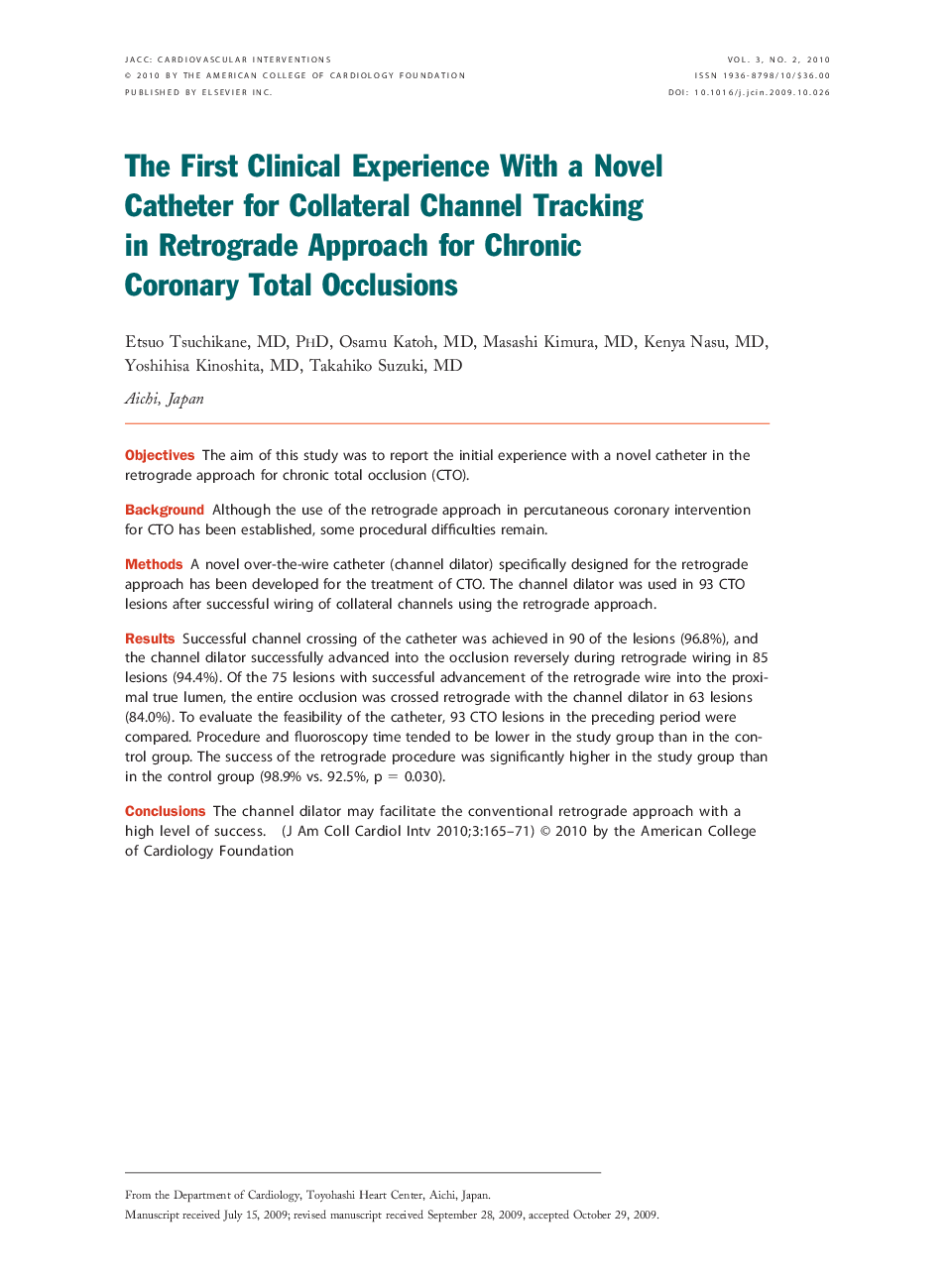| Article ID | Journal | Published Year | Pages | File Type |
|---|---|---|---|---|
| 2941955 | JACC: Cardiovascular Interventions | 2010 | 7 Pages |
ObjectivesThe aim of this study was to report the initial experience with a novel catheter in the retrograde approach for chronic total occlusion (CTO).BackgroundAlthough the use of the retrograde approach in percutaneous coronary intervention for CTO has been established, some procedural difficulties remain.MethodsA novel over-the-wire catheter (channel dilator) specifically designed for the retrograde approach has been developed for the treatment of CTO. The channel dilator was used in 93 CTO lesions after successful wiring of collateral channels using the retrograde approach.ResultsSuccessful channel crossing of the catheter was achieved in 90 of the lesions (96.8%), and the channel dilator successfully advanced into the occlusion reversely during retrograde wiring in 85 lesions (94.4%). Of the 75 lesions with successful advancement of the retrograde wire into the proximal true lumen, the entire occlusion was crossed retrograde with the channel dilator in 63 lesions (84.0%). To evaluate the feasibility of the catheter, 93 CTO lesions in the preceding period were compared. Procedure and fluoroscopy time tended to be lower in the study group than in the control group. The success of the retrograde procedure was significantly higher in the study group than in the control group (98.9% vs. 92.5%, p = 0.030).ConclusionsThe channel dilator may facilitate the conventional retrograde approach with a high level of success.
